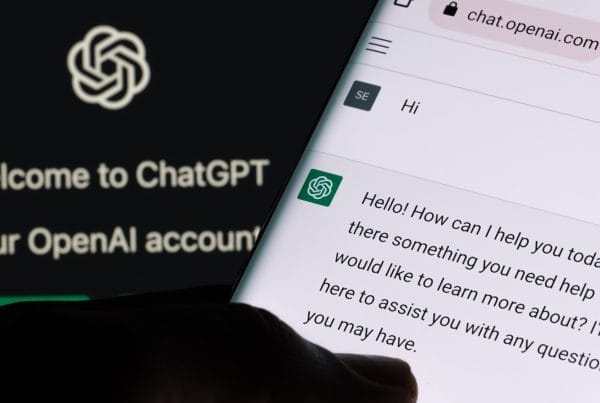Have you ever wondered if your target audience will understand what you’ve written?
That’s exactly what the Flesch-Kincaid grade level does for you. The readability tool helps to evaluate the effectiveness of your writing and if it is concise enough for the audience you’re trying to reach.
In this article, we’ll explain what the Flesch-Kincaid Grade Level is and how you can use it to improve any of your writing.
CONTENT
What is Flesch-Kincaid Grade Level?
Benefits of Flesch-Kincaid Grade Level?
Brief History on Flesch-Kincaid Grade Level
How the Flesch-Kincaid Readability Test Works
Common Uses of Flesch-Kincaid Grade Level
Limitations of Flesch-Kincaid Grade Level
Flesch-Kincaid Grade Level And Other Readability Formulas
How Can I Get a Readability Score?
Final Thoughts on Flesch-Kincaid Grade Level
What Is Flesch-Kincaid Grade Level?
Flesch-Kincaid grade level is a readability metric used to measure how difficult a piece of writing is to understand based on the length of the words and the sentences. It corresponds to the U.S grade level of education which varies from 0-18.
The Flesch-Kincaid grade level score can give you valuable insight into how clear your writing is to the right audience you want to reach.
For example, if your text has a Flesch-Kincaid grade level of 5, it means the reader needs a grade 5 level of education or above to understand it. This also implies that the higher the level score of a text, the higher the level of education needed to comprehend it.
Benefits of Flesch-Kincaid Grade Level Score
Benefits of Flesh-Kincaid grade level score include the following.
- It helps to determine if your message is clear and easy to understand
- It ensures your content matches the grade level of the audience you want to reach
- It increases user engagement and social shares on your content
Brief History on Flesch-Kincaid Grade Level
The Flesch-Kincaid Grade Level was developed by Rudolf Flesch and J. Peter Kincaid in 1975 to assess the readability of English texts. According to research, the Flesh-Kincaid formula was first used by the Army to assess the difficulty of technical manuals in 1978. This grade level soon became the United States Military Standard. And now, it is being used by educators and writers to ensure their content is understandable to a large audience.
How the Flesch-Kincaid Grade Level Readability Test Works
Flesch-Kincaid grade level readability test works by calculating the word length and sentence length. This helps to estimate the educational level needed to understand the content.
Word Length: is the average number of syllables in a word
Sentence Length: the average number of words in a sentence
The Flesch-Kincaid grade level is calculated using the following formula:
0.39 x (total words/total sentences) + 11.8 x (total syllables/total words) – 15.59.
A higher Flesch-Kincaid grade level score means the text is complex and requires an advanced reading level.
However, you don’t need to be a math wiz to calculate the grade level yourself. You can save time by checking your text readability with Wiston AI or other readability test tools.
Common uses of Flesch-Kincaid Grade Level
The Flesch-Kincaid grade level is used in assessing the readability of different texts such as:
- Textbooks, workbooks, and courses for schools and libraries
- Blogs, website copy, and articles like this one
- Laws, regulations, and public policy by the government and military
- Advertising copy by marketers
- Academic papers and publications
- Novels by authors and writers
- Boosting SEO performance online
Limitations Of Flesch-Kincaid Grade Level
While the Flesch-Kincaid grade level is effective in assessing readability, it has the following limitations.
- Flesch-Kincaid grade level doesn’t consider the complexity of the topic
A technical manual or research paper, for instance, may have simple sentences and structures but a high-grade level.
- It ignores the prior knowledge an audience has on the subject
Imagine you’re writing a manual for a gaming laptop. The reader would want to know about the refresh rate, the resolution, the battery life, the screen size, the memory, etc. The Flesch-Kincaid grade level will be high. But it doesn’t mean the audience doesn’t already know the technical jargon.
Other factors that influence readability include the content, organisation, and layout.
Flesch-Kincaid Grade Level And Other Readability Formulas
Though the Flesch-Kincaid Grade Level is popular, there are other readability formulas online. These formulas help in grading how easy or difficult your content is to read and the amount of big words and sentences used in the content. They include:
- The Gunning Fog Index
- Simple Measure of Gobbledygook Formula (SMOG)
- Lix and Rix readability formula
- The Lensear Write readability formula
- Human feedback
How Can I Get a Readability Score
There are several ressources and tools available online, free and paid. Winston AI offers a free readability checker so you can get an instant assessment on your content readability.
Final thoughts
Considering how short people’s attention spans are, the Flesch-Kincaid grade level helps to ensure your writing is clear and concise for the target audience without wasting time. You can easily check the readability of your text with Winston AI to determine if it matches the grade level of the right audience you want to reach.
However, it is recommended you don’t rely too much on the Flesch-Kincaid grade level because of its limitations. Ask for feedback from an editor or good writers. They can help you to detect the tone, simplicity, and clarity of your content.



